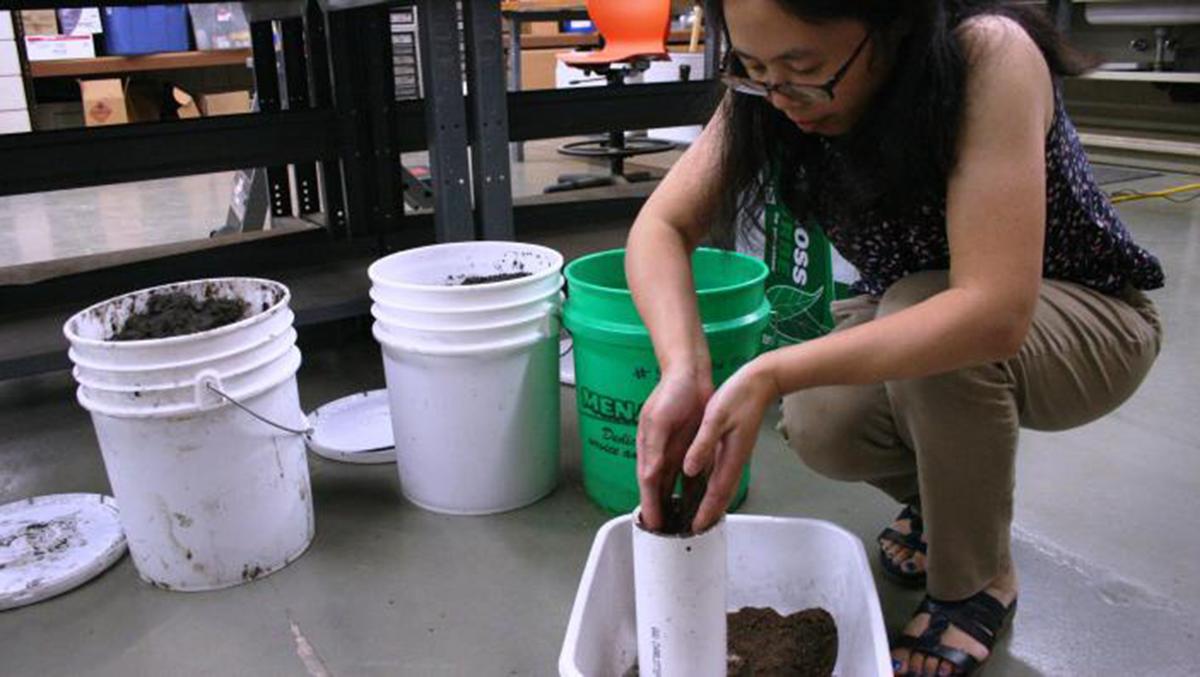Pollutants in runoff from roads – suspended solids, heavy metals and excess nutrients – can get into watersheds, if not captured and filtered. And there are standard procedures in place to do just that using compost and sand under grass in bioslopes and bioswales along the roads.
They are pretty effective at catching the water and filtering it before the water hits wetlands, although roads with little or no shoulder space are especially challenging.
Now, a potentially better and very localized idea is being tested at NRRI.
NRRI Scientists Kurt Johnson and Meijun Cai are experimenting with mixtures of muck (heavy on the clay and some organic material), peat that was stockpiled after a road construction project, and taconite tailings waste rock. Each material has its advantages and disadvantages, so the researchers are experimenting with which “recipe” works.
“It has to support vegetation and it has to filter chemicals in the stormwater,” said Johnson. “And, of course, they have to be native plants, so I’m looking at the biology and plant growth potential.”
Cai is an environmental engineer, so she’s working on the chemical efficiency side of the materials. Another part of the team is with UMD’s Civil Engineering Department to develop the water storage requirements for the materials.
“We’re comparing our mixes to the standard compost/sand mix,” said Cai. “If it works and the performance is good, we can use these local waste resources for local projects.”
